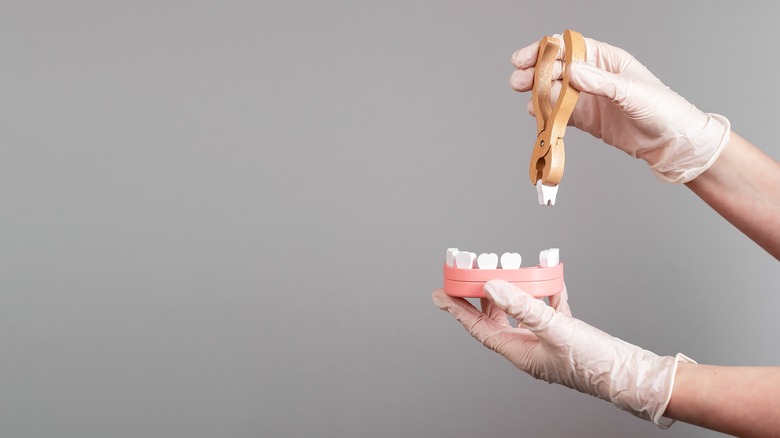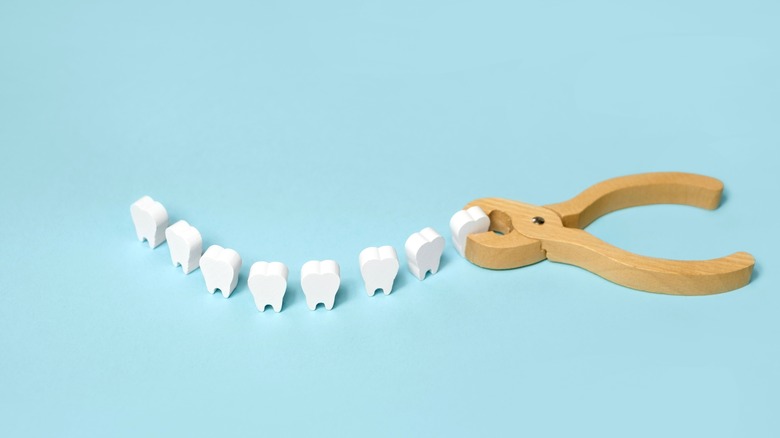Wisdom teeth, also known as third molars, are the last set of teeth to develop and emerge in the back of the mouth behind the second molars. They typically appear between the ages of 17 and 25, although some people may not develop them at all (via the Cleveland Clinic).
Wisdom teeth are widely considered vestigial, meaning they no longer serve any purpose in humans. The human jaw has become smaller over time, so for many people, the wisdom teeth may not have enough room to emerge properly, explains the Cleveland Clinic.
According to the clinic, wisdom teeth can cause problems if they do not emerge properly. One such problem is an infection such as pericoronitis, per Columbia College of Dental Medicine. Pericoronitis is typically caused by a buildup of food particles and bacteria in the flap of gum tissue created by a partially erupted wisdom tooth, per the college. The teeth’s location at the back of the mouth might also cause difficulty in cleaning the area, making it more susceptible to infection.
Tips for managing a wisdom tooth infection

When managing a minor wisdom teeth infection at home, rinsing your mouth with warm salt water several times a day and taking pain medication might help reduce inflammation and clean the area, per Medical News Today. But this won’t cure the infection.
If you notice symptoms of a wisdom tooth infection, such as pain or swelling, it’s best to visit your dentist as soon as possible for an examination and diagnosis — especially if symptoms last longer than three days.
Your dentist may take an X-ray to determine the cause of the infection and to plan the appropriate treatment, says the Mayo Clinic. Depending on the severity of the infection, your dentist may recommend antibiotics to help clear the infection, per Medical News Today. It is important to take the antibiotics as prescribed and to finish the full course of treatment, even if the symptoms improve before the medication is finished.
In some cases, your dentist may recommend that the wisdom tooth be removed. This can be done through an extraction, per the Mayo Clinic. Generally speaking, it’s best to follow the aftercare instructions provided by your dentist or oral surgeon.
What causes a wisdom tooth infection?

When wisdom teeth do not have enough room to emerge properly, they may become impacted, meaning they are blocked from fully emerging by other teeth, bone, or soft tissue (via the Cleveland Clinic). Impacted wisdom teeth can cause an infection and can also lead to damage to other teeth, as well as the development of cysts or tumors, says the clinic.
Symptoms of a wisdom tooth infection can include pain, swelling, redness in the gums around the wisdom tooth, difficulty opening the mouth, and a foul odor from the breath (per Better Health).
Some people experience infections after having their wisdom teeth removed, per a 2024 study published by the University of Zurich. The risk can be minimized by following your dentist’s aftercare instructions.
Generally speaking, wisdom tooth infections can be serious and should be treated promptly. If you are experiencing symptoms like severe pain, swelling, or stiff jaw, seek treatment immediately.




